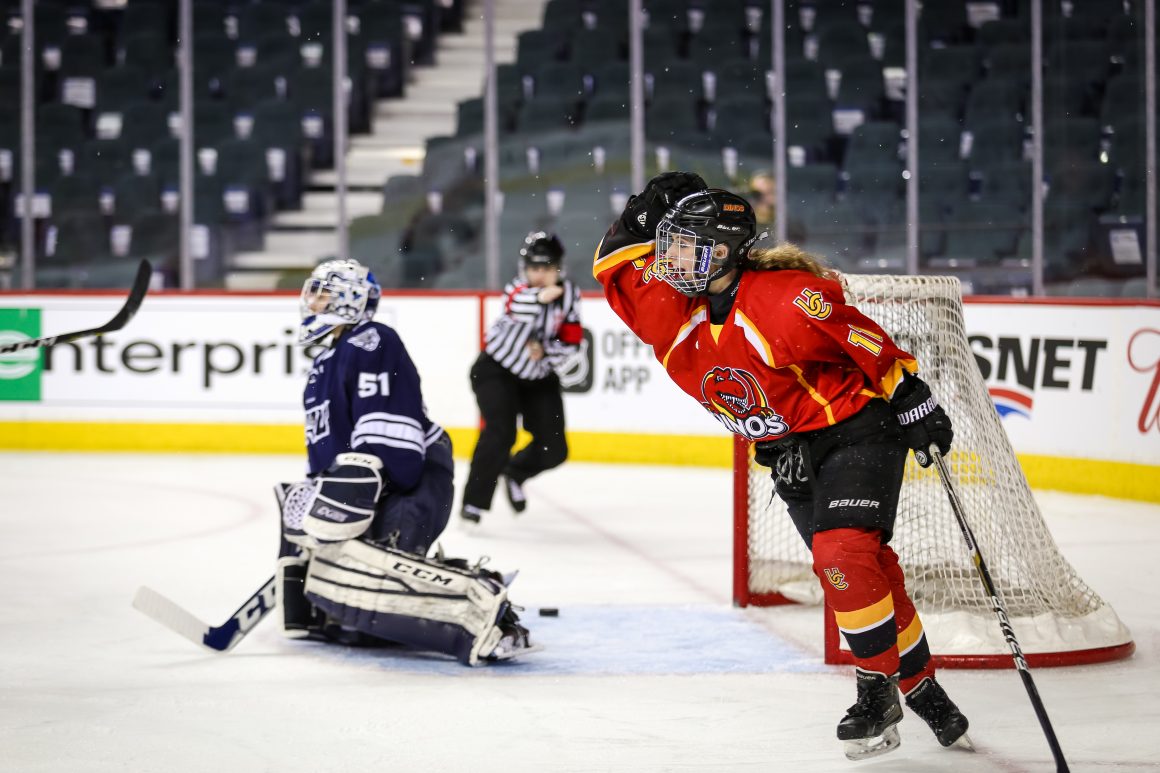
High-quality representation of women in sports at U of C far from the norm
By Kristy Koehler, June 26 2018 —
A quick glance at the Dinos website shows that women’s sports are well-represented at both the varsity and club levels. Hockey, soccer, volleyball, basketball, wrestling, track and field and swimming are all offered at the University of Calgary as varsity sports, alongside female rugby, ringette and synchronized swimming clubs. Scrolling through the site, female athletes are depicted in scenes of triumph — sweating and celebrating on the field of play. Sadly, this treatment of women’s sports is far from the norm.
While the U of C portrays its female athletes as fierce competitors, popular magazines often sexualize women who participate in sport, instead of highlighting professional success and athletic prowess. Male athletes are depicted on the field of play, faces contorted in the efforts of a physical feat, while women are often shown off-field, bent over, smiling or generally posing in a ways entirely unrelated to their sport. Indeed, a simple Google image search of ‘female athletes’ reveals that the first two rows of images are overwhelmingly linked to articles with titles like “Female Olympians Show Off Their Abs” or “Top 10 Hottest Female Athletes in the World” — there are even a few stylized shoots of women in lingerie.
Faculty of Kinesiology assistant professor William Bridel says that society has “plenty of unpacking and deconstructing” to do when it comes to ideas about gender in sport.
“While great strides have been made to see women and men as equals in the context of sport, there is still much work to be done,”
He says there is a long-standing problem of sexualizing and trivializing women’s roles in sport.
“When journalists can’t sexualize athletes, they don’t know how to talk about them,” Bridel adds.
Coverage of women’s sports doesn’t get equal air time when compared to men’s sports. When it does get air time, it often focuses on sports that are traditionally viewed as feminine.
The Olympics are heralded as an egalitarian event, with equal coverage given to women’s sport, but what sports actually dominate media coverage when it comes to female athletes? In the summer, it’s gymnastics, swimming and tennis. The Winter Games bias figure skating and ice dancing, both traditionally ‘female’ sports. Rarely does women’s shotput or weightlifting receive top billing.
While we can implement policies to promote female athletics, if we don’t take a bottom-up approach to changing ingrained attitudes about gender norms in sport, those types of policies won’t have much of an impact. Changing attitudes starts well before an elite level of competition — it begins in the community.
Bridel points to young children’s sports teams such as Timbit’s hockey, where men coach and women take the role of “team manager, bringing the snacks and doing administrative tasks for the team.” Stereotypes about men’s sports being more entertaining than women’s sports continues well into university. Bridel notes some resistance in his classes, even among female students, to let go of the idea that women’s sports aren’t as fast-paced or as interesting to watch as men’s.
“Changing the way we view female athletes requires a fundamental shift in the narrative at the grassroots level, making sure that there are programs and opportunities to have women in key coaching roles,” Bridel says. “We need to train women into leadership roles so there is a presence of positive role models to inspire young women. It’s also good for young boys and men to see women in a different light.”
There are very few women coaching at an elite level, especially for all-male teams. The opposite is true of male coaches, who are almost always at the helm of all-female teams. The more elite the level of play, the fewer female coaching staff are present. Trailblazer Brenda Willis of Queen’s University is the only female head coach of a men’s varsity team in Canada. While the U of C is somewhat progressive in terms of its treatment of male and female athletes, there remains a noticeable lack of female coaching staff.
Despite the work that needs to be done, we are moving in a positive direction. For example, social media has been an excellent vehicle for an emerging counter-narrative. During the last Summer Olympics, the Twitterverse rallied around trapshooter Corey Cogdell when the Chicago Tribune announced her victory with the headline, “Corey Cogdell, wife of Bears lineman Mitch Unrein, wins bronze in Rio.” Users were quick to re-write the headline, satirically describing her husband’s football achievements in the context of Cogdell’s Olympic career and prompting an apology from the Tribune.
The U of C is certainly open to discussion about the state of its female athletics — more so than many other universities, according to Bridel. The Dinos varsity schedule starts up again in September with an impressive array of sporting spectacle to take in. Make sure you take a break from the fast pace of university to check out some games this fall.
